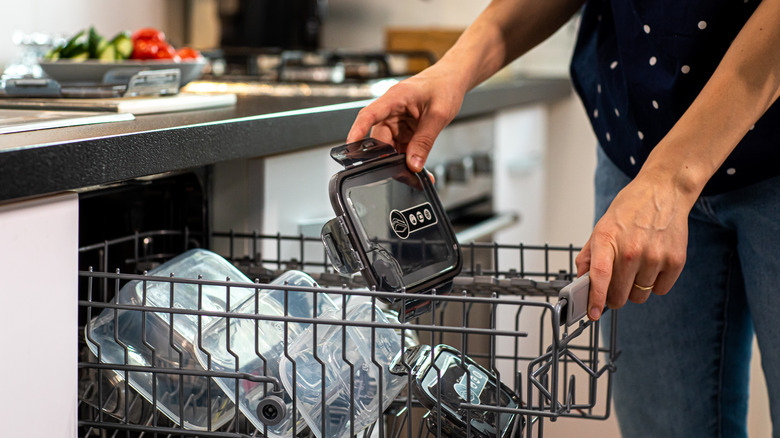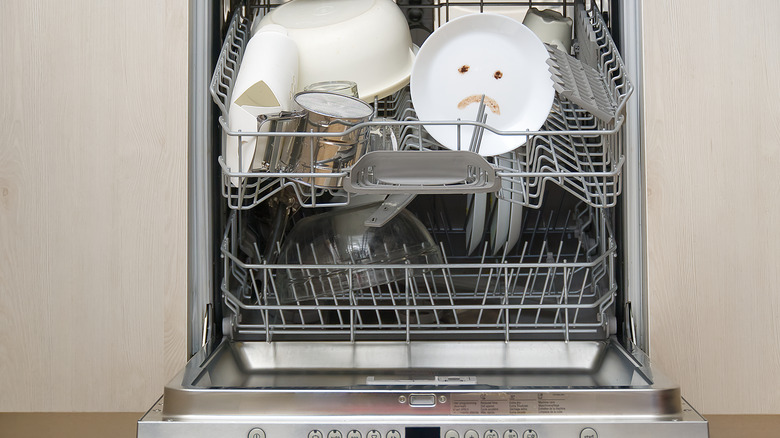Here's Why You Should Never Load Plastic Containers On The Dishwasher's Bottom Rack
Have you ever noticed the little logo on the underside of your plastic storage containers? This symbol is hard to decipher at first, but it shows two plates with dashes descending from the top corner. This means that the item is "dishwasher safe, top rack only." It can seem odd for something to be dishwasher safe but only if it's held on a specific tier. But it is essential to adhere to this instruction, or you may run into some issues. Maybe you've washed your large plastic food bowls on the bottom rack and seen no adverse effects, but you still want to avoid doing this because the problems aren't always immediately apparent. Washing plastic dishes on the bottom rack can lead to warped, melted plastic, and can even leach chemical compounds from the plastic and onto your other dishes.
Moreover, if your plastic container isn't explicitly marked as BPA-free, it shouldn't go in your dishwasher at all, and you should be cautious of other chemically similar compounds such as BPS, BPF, and BPAF, says Finish. According to Healthline, BPA has been linked to negative health outcomes, such as reproductive issues and heart disease. But, for other food-grade plastics, the top rack is the best choice for making sure they come out clean every time, and last for years.
What can go wrong on the bottom rack?
You may not realize that while your dishwasher is in cleaning mode, the water gets very hot. GE says that a proper dishwashing cycle needs to run between 120º-150º Fahrenheit. Official Tupperware containers are typically made from either low-density polyethylene (LDPE) or polypropylene (PP), which can withstand maximum temperatures of 176 and 266 degrees Fahrenheit, respectively. But they can warp and even melt if exposed to high temperatures for a prolonged period of time. The bottom rack of your dishwasher receives more direct heat and hot water than the top, which is one reason for the top rack-only designation for plastics.
Another thing to consider when loading BPA-free plastic dishes into the dishwasher has less to do with chemical reactions and risks, and more to do with basic physical rules. If you've ever put a lightweight plastic container in the bottom rack and noticed it tipped over and filled with nasty water when it's time to unload, it's because the direct pressure from the water sprayers can move items around during the cleaning cycle. To save yourself time and frustration, keep the plastic dishes in the top rack, where they'll receive far less direct force from the water.

